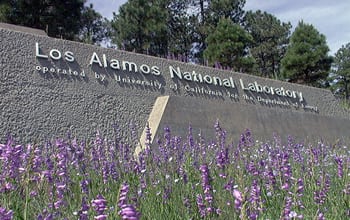
The newly inked agreement between New Mexico’s Environment Department and the National Nuclear Security Administration about what to do with radioactive waste will prioritize old waste ahead of byproducts of an impending ramp-up in plutonium pit production.
A New Mexico Environment Department spokesman said the “settlement agreement prioritizes legacy waste ahead of newly generated waste of any type.”
“The New Mexico Environment Department has not received official notice from the U.S. Department of Energy regarding when NNSA’s pit production program is supposed to be fully operating— or creating newly-generated [transuranic] waste,” the spokesman added.
Announced just a week ago, the 10-year draft permit for the Department of Energy’s underground transuranic waste disposal site near Carlsbad, N.M., will prioritize legacy waste from cleanup activities over new waste resulting from the impending ramp-up in plutonium pit production at nearby Los Alamos National Laboratory, the New Mexico Environment Department said.
The New Mexico Environment Department said the deal increases regulatory oversight and safeguards, greenlights development of two new hazardous waste disposal panels over the next decade and will also prioritize legacy waste from cleanup activities, including those ongoing at Los Alamos National Laboratory (LANL).
Los Alamos is set to make a lot more waste, although that new waste won’t emerge from the lab until halfway through this new permit period or later. There are also options for temporary on-site storage or disposing of some of it alongside legacy waste.
The lab is intent on producing 30 plutonium pits per year for the primary triggers for new nuclear weapons by the end of the decade, if not sooner.
Waste disposal is an essential part of pit production, which cannot commence until there are plans for the waste that results from refining plutonium and other isotopes for use in nuclear weapons.